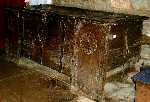 |
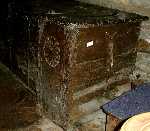 |
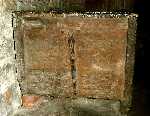 |
| An angled shot of the chest from the right
side. You can clearly see that the arcading in the legs doesn't
penetrate all the way through.(120kb) |
Another shot showing the right side of the
chest. (54kb) |
The left side of the chest, showing a clear
view of the transport rings. You can clearly see that the legs don't
"wrap around the corner".(68kb) |
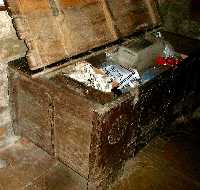 |
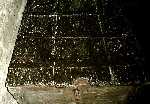 |
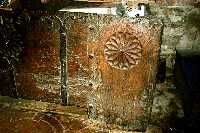 |
| This photo shows the fact that the entire
lid does not open. Only part of it, and the hinges are on the top
of the chest. Notice the small tray in left side of the chest.
(79kb) |
This photo shows the hinges on the top of
the chest. (73kb) |
A good view of the right side, showing the
pegs in the joinery, the iron strapwork, and the palmetto chip carving.
(92kb) |
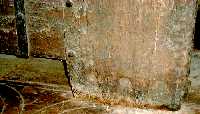 |
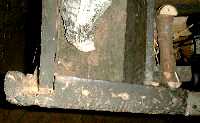 |
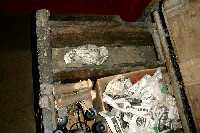 |
| This photo shows what is left of the
arcading on the foot of the chest. (62kb) |
This shot shows the joint of the left side
and the front. This also shows the interior of the tray. (48kb) |
This photo shows another angle of the tray
in the left side of the chest. (66kb) |
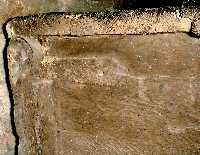 |
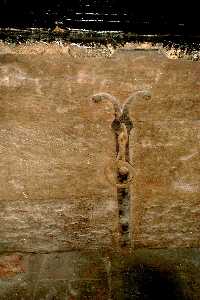 |
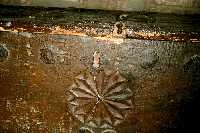 |
| The left side of the chest with some
repairs and reinforcements made several centuries ago. (98kb) |
Another clear photo of the transport rings
(and the cut out section of the lid that allowing the rings to flip up)
(126kb) |
A photo showing that originally the chest
had a center lock plate, and then (after the lock mechanism was removed)
hasps were added. (83kb) |
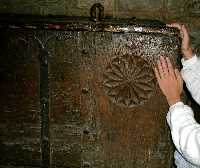 |
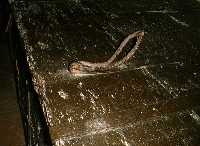 |
|
| This shows the relative size of the
palmetto design, and the hasp on top of the chest |
A good photo of one of the hasps that flip
down to lock the chest. |
|